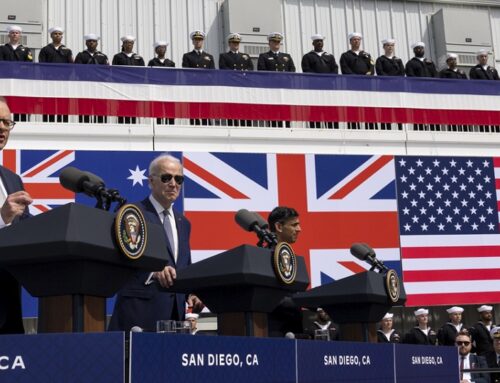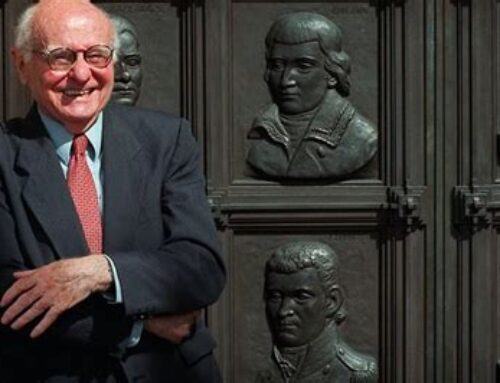Nicholas Harrington reviews Quantum Social Theory for Critical International Relations Theorists: Quantizing Critique by Michael Murphy (Project Q contributor and University of Ottawa Doctoral Fellow). Published in 2021 by Palgrave Macmillan.
The following advice is attributed to Russian playwright, Anton Chekhov: “Don’t tell me the moon is shining; show me the glint of light on broken glass.” In other words, to captivate your audience you must show them the substance of an argument rather than simply describe the claim. Michael Murphy’s book, Quantum Social Theory for Critical International Relations Theorists: Quantizing Critique, is a crisp, clean, and clever demonstration of quantum social theory that moves beyond merely advocating a ‘quantum turn’ in the social sciences and, instead, shows why it is necessary.
For the past 30 years or so, various social scientists have claimed it is ‘about time’ disciplines like sociology, psychology, political science, and international relations (IR) adopt insights from quantum physics to enrich their fields (Murphy terms this endeavour ‘quantizing’). Fundamentally, what these intrepid quantum social theorists are trying to promote is a paradigm shift in the social sciences. Despite being the most cited work in the field, it seems many social scientists have missed the moral of Thomas Kuhn’s story, The Structure of Scientific Revolutions. That is to say, paradigm shifts are exceedingly hard to pull off. What the majority of prior efforts have neglected – but of which, thankfully, Murphy is keenly aware – is:
“… few scientists will easily be persuaded to adopt a viewpoint that again opens to question many problems that had previously been solved… scientists will be reluctant to embrace it unless convinced that two all-important conditions are being met. First, the new candidate must seem to resolve some outstanding and generally recognized problem that can be met in no other way. Second, the new paradigm must promise to preserve a relatively large part of the concrete problem-solving ability that has accrued to science through its predecessors.”
Murphy presents two specific approaches he argues will free international relations from its present malaise. The first approach is referred to as ‘translation’ (a process whereby conventional IR concepts are ‘translated’ into their quantum counterparts), the second is ‘application.’ It seems to me that translation is vulnerable to criticisms of redundancy and prey to sceptics who enjoy the refrain ‘but, what’s the point of quantum? What does it do that we don’t do already?’ This reluctance to engage with new modes of thinking remains the major hurdle for the quantizing of international relations on a broad scale. But this aside, Murphy’s proposed ‘application’ of quantizing in international relations is compelling. According to my reading, ‘application’ consists in nothing less than problematizing, undermining, and re-conceptualisating IR’s a priori cosmological framework. Now, Murphy doesn’t position his thesis in these grandiose terms. Nevertheless, if you follow his recommendations, you are obliged to fulfil this mandate.
Murphy diagnoses IR as a discipline mired in, and frustrated by what he calls the ‘Newtonian physical imaginary.’ The Newtonian physical imaginary is the “set of assumptions that sketches the contours of the possible” within which international relations theories can operate. Fortunately, Murphy is in august company making such a claim. Physicists Shimon Malin and Carlo Rovelli discuss this very predicament in their respective books: Nature Loves to Hide and Reality Is Not What It Seems. Indeed, the idea that our ‘modern’ ideational landscape is contoured by a Newtonian cosmology constitutes Alexandre Koyré’s magisterial thesis in, From the Closed World to the Infinite Universe.
The IR symptom of this Newtonian malady is the inability to ‘imagine’ various forces that influence and operate at the international level, across borders, and may well structure much of what takes place in the international system – especially between the ‘core’ and the ‘periphery’. Murphy notes, “such forces as racism, sexism, inequality, and sovereignty are all rendered unimaginable in a fundamental sense, despite their important structural effects.” Here then, Murphy approaches the first of Kuhn’s paradigmatic requirements. IR exhibits, “some outstanding and generally recognized problem that can be met in no other way.”
The prescription Murphy offers is the ‘Quantum physical imaginary’: ditch the Newtonian cosmological framework and adopt a quantum cosmology. In the quantum physical imaginary, the entanglement of international actors and the co-constitutive dimension of causes and effects becomes ‘real’ and therefore possible. Although this example is not specifically offered in Murphy’s book, it is not difficult to see that the entire subject of ‘globalisation’ would benefit greatly from being ‘possiblised’ within a quantum physical imaginary. No longer would we encounter that strange dichotomous relationship between sovereignty, on the one hand, and economy on the other. Instead, within the quantum physical imaginary both sovereignty and economy can be theorised as co-constitutively transformed phenomena, through their entanglement across an historical period understood as globalization.
Recently, I spoke with the author about his book. Murphy described his personal quantum turn in a very ‘Kuhnian’ fashion: he was frustrated by the paradigmatic binary with which he was presented within orthodox critical international relations.
“It’s either structural or micro-foundational. And, when it’s micro-foundational – as with Latour’s Actor Network Theory – then everything else disappears. There’s no room for structural force.”
In other words, the theories being generated by the current IR paradigm are not fit for the task to which they are being assigned. Murphy recognised his discipline was in something of an epistemic rut.
Although Murphy claims his quantum approach is “more epistemological than ontological,” I put it to him that his prescription is better described as a heuristic that leverages a revolution in the ontological underpinning of orthodox IR. In such a way, I see Murphy’s thesis as a middle road between an ontological and epistemic form of social science ‘quantizing.’ What Murphy has developed is not a distinct epistemology, per se – i.e., a particular way of producing knowledge about the world – rather, it is a conceptual framework according to which new ways of thinking about subject areas are made possible. Critically, however, the heuristic only works if the Newtonian cosmology is replaced with a quantum cosmology. This means any practitioner necessarily suspends their commitment to one ontological frame in favour of the other.
In the end, what I appreciate most about Murphy’s book is that it gives the reader tools to work with. Murphy told me there had been a “good amount of throat clearing” in quantum social science circles and it was now time to “get moving” – to “demonstrate the value of these new ideas.” Hear! Hear! I couldn’t agree more. The last three decades have been awash with efforts to tell social scientists about the merits of a quantum turn. It’s, therefore, refreshing to come across a work where the author has the courage of their convictions and makes the effort to show us why.







Leave a Reply